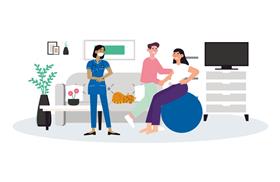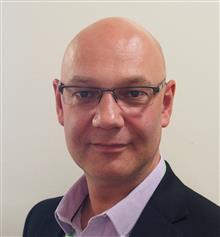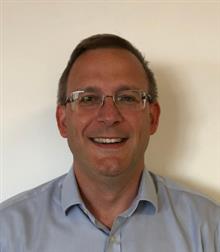| Welcome to the programme newsletter | Welcome to the 2nd edition of our Humber Acute Services programme newsletter. In it you'll find the latest news from the programme and information about how you can get involved, share your ideas or ask questions.
We hope you will find it interetsting, helpful and informative. | |
|
Tell us What Matters to You
|
We have re-opened our What Matters to You Survey, so it's not too late to have your say.
Please tell us what matters most to you, so that we can plan the future of our health and care services with that in mind.
|
|
| What is the Humber Acute Services Programme all about? |
|
|
Why we need to change
|
When thinking about the care we provide in our hospitals today, we can divide this up into three main building blocks of services:
- Care when you need it unexpectedly (Urgent and Emergency Care)
- Services for women and children (Maternity, Neonatal care and Paediatrics)
- Procedures, tests and other appointments that are planned in advance (Planned Care and Diagnostics)
Our core hospital services programme is looking at each of these building blocks across the Humber region. We have undertaken a thorough review of each service area to build our understanding of the problems, challenges and risks in the way we work now (read more here).
Our aim is to provide the best possible care for everyone in our area, now and in the future. We are not doing that as well as we could because we do not have, and cannot attract, the staff we need to do everything everywhere. Patients are not always being seen or treated quickly enough, and this has been exacerbated by the impact of the pandemic. Some of our buildings and equipment are old and the ways we organise our services don’t always make the best use of the people, equipment and buildings we do have.
In each of the three “building blocks”, we have some specific challenges and/or areas where we need to improve.
|
|
|
Urgent and Emergency Care
|
|

|
At some point in our lives, most of us will require care in an urgent or emergency situation. We know from talking to local people that it can be difficult to know which service to use and you can’t always access the care you need when you need it.
In our hospitals in Hull, Grimsby and Scunthorpe, there are some things that make it harder for us to provide the best urgent and emergency care for our population – these are the challenges we are looking to tackle through this programme.
- Compared to other parts of the country, more people use our Emergency Departments (ED) and more people are admitted to hospital in an emergency situation.
- We also have a higher proportion of our patients who arrive by ambulance or helicopter.
- Our hospitals currently have difficulties meeting some important clinical standards, including the four-hour A&E standard (which states that 95% of patients attending A&E should be admitted, transferred or discharged within four hours),
- When people do use of hospitals they often have to wait longer or stay in hospital longer than people with similar conditions in other parts of the country. Some of this is linked to the way our services are organised and difficulties putting in place ‘seven day working’.
- We also have a high number of vacancies within the medical, clinical and nursing workforce.
By working together in new ways, we want to ensure all people living across the Humber can access the right care and the right time when they need it urgently.
|
|

|
|
Maternity, Neonatal Care and Paediatrics
|
|
Across the Humber, there are around 9000 babies born every year – every hour a new baby is born somewhere in the Humber. These births are not spread out evenly across the different sites in our region and our hospital maternity units in Scunthorpe and Grimsby are small when compared to other areas in the country.
Maternity services also rely heavily on neonatal (care provided for new-born babies who need extra support) and paediatric services (care for children and young people). Changes in one service area could have a knock-on effect on the other. Our paediatric services face a number of challenges, in particular, relating to recruitment.
- There are differences in how maternity care is provided across the region and women are telling us that they have less choice than women in other parts of England.
- Compared to other parts of the country, a larger proportion of our babies are born prematurely and need extra care. We also look after more women with higher risk pregnancies.
- Due to the relatively low number of births on our Grimsby and Scunthorpe sites, it is difficult to ensure all our staff keep up their skills because they are not seeing the recommended numbers of low birth-weight babies.
- New standards around numbers of staff needed in neonatal and paediatric services are stretching the existing workforce further, meaning it is even more challenging to continue to staff the services safely.
- We are not always able to meet important clinical standards set out by the Royal College of Paediatrics and Child Health, particularly around immediate access to senior paediatric staff.
- Recruiting paediatric trainee doctors and paediatric nurses remains a problem – not only across the Humber, but nationally.
We have been asking women, their partners and families to tell us what matters most to them when making choices about where to give birth. This will help us to design maternity and neonatal services that will work better in the future. We are also listening to children and young people, their parents, carers and friends to help us shape the future of paediatric services.
|
|
|
Planned care and diagnostics
|
|

|
Across our hospitals we also see thousands of patients every week for planned operations or other treatment, scans and other tests. The way our planned care and diagnostic services are set up, however, means we are not always making the best use of the equipment, buildings and workforce that we have and our people are not getting the best possible outcomes.
- In many of our services, too many patients are waiting too long to be seen. This has become worse as a result of the Coronavirus pandemic.
- Too often appointments run late or are cancelled at the last minute because the staff, equipment or buildings need to be used to treat patients who have come in as emergencies.
- We are not always able to meet important clinical standards across all our hospital sites.
- As with other services, we find it difficult to recruit and retain a large enough workforce with the right skills and experience to meet the needs and demands of our population.
- Old buildings and equipment cause backlogs in getting reports on scans or other images. The unreliability of some of our imaging equipment and machines can lead to incorrect clinical conclusions.
We know from our engagement already that being seen and treated as quickly as possible is very important to local people. In planning for the future, we will pay particular attention to tackling long waiting lists and designing services that can see patients quickly and efficiently.
|
|
|
Find out more and get involved
|
|
You can find out more about the programme and share your ideas in lots of ways
|
Read more about the programme
- there is lots more information available on our website
Ask a Question - get in touch
Respond to a survey
- we will be running a variety of surveys over the coming months
- you can find out more and take part on our Engagement Hub
Attend an event
-
workshops and events will take place later in the year details of how to get involved will be available on our Engagement Hub
|
|
| Your Questions Answered... |
|
|
How are patients from outside the Humber being considered?
|
Question:
A significant number of patients present at Diana Princess of Wales hospital (DPoW) from far reaching areas within Linconshire (Louth, Mablethorpe, Skegness and surrounding Villages).
Has consideration been given to which services may be relocated within the partnership and the knock-on effect this may have to the Trusts/Hospitals on our borders and their ability to cope with increased numbers of patients as a result if these services are no longer within the patient's reach at our Hospitals?
Answer:
It is absolutely right that a lot of patients from greater Lincolnshire access hospital services delivered by Northern Lincolnshire and Goole NHS Foundation Trust – particularly from down the East Coast.
When United Lincolnshire is particularly under pressure, our patient catchment area extends often as far as Skegness, but certainly Mablethorpe and Louth are well within our catchment area. We are assuming those patients will still want to come into the new service structure we create. And in the mapping of patients, patient flows, travel times and so on, we are taking full account of the flows in from Lincolnshire.
It is really important to recognise that the Humber Acute Services programme is not working in isolation; and one of the key pieces of work that continues to be refreshed is around how any work or proposals fit with all the programmes of change that are going on around us in other organisations and other areas across the Humber, and beyond. We are making every effort to ensure the impact is being looked at through every possible lens. But the more questions that we have and the more things that people bring to us, the more confident we can be that we have considered everything that’s relevant and the better we will be able to truly articulate the direction of travel.
|
|
|
Your Birthing Choices
|
Through the Humber Acute Services Programme, we are looking at how we can provide the best possible maternity and neonatal services across our region.
We asked people who have recently given birth or are pregnant now, their partners, families and friends and anyone else with recent experience of maternity and/or neonatal care to share their experiences and views to help us shape the future of these services.
The survey has now closed and we were delighted to receive over 1000 responses.
Our thanks goes out to all those who took part and shared their views and experiences - which gives us lots of valuable insights. Thank you!
We are now busy analysing all the feedback we have received and will share the feedback report in the next few weeks, once this is available.
We will publish the findings on our Engagement Hub soon.
|
|
| Getting to know... the Humber Acute Services programme team |
|
|
Claire Hansen, Programme Director, Humber Acute Services Programme
|
|

|
What do you do?
I oversee the process and the direction for the programme and manage the team within it.
What do you love most about your job?
Previously I was Deputy Chief Operating Officer at Northern Lincolnshire and Goole Hospitals NHS Foundation Trust (NLaG). We had been talking, for several years, about the Humber Acute Services Review. When I saw this role advertised, I just knew I wanted to get involved, be a part of it all and make changes for the better.
How have you been involved so far?
We’ve appointed three transformation leads. These leads are introducing themselves to the clinical and managerial leads and are working with them to develop an interim clinical plan for the next 18 – 24 months.
We’ve agreed a governance structure for decisions jointly made between NLaG and Hull University Teaching Hospitals NHS Trust (HUTH) as part of that interim clinical plan (Programme One). This is such a great achievement for two such large organisations.
For Programme Two we’re still developing our plans, gathering information, looking at how proposed changes will benefit our local population. This will help us to decide which proposals will be included in our business case that we use to engage with the public for their views.
What changes have you seen during your time?
The biggest change is the collaboration between the specialties and the organisations. Because of the pandemic, traditional walls and barriers have come down with everyone working much more closely together. The clinical teams are coming up with some fabulous ideas looking at how we can better treat patients out in their local community rather than having to come into hospital.
Opportunities emerging through discussions with our local authorities and the potential to see health care services becoming part of their community regeneration plans, bringing services closer to many people’s homes.
If you could wave a magic wand what one thing would you change about health and care in the Humber?
To make sure everybody had access to quality, safe services close to home, with no long waiting times.
What’s the one thing that can instantly make your day better?
The fabulous team that I work with across HUTH, NLaG, the CCGs and Primary Care. A cheery ‘hello’ in the morning really makes my day.
Do you have a favourite holiday destination?
South Africa, it’s amazing
Who’s your role model?
My grandmother, she was a very calm, kind individual who always took time to listen to people and never passed judgement. She was an amazing woman.
|
|

|
|
Simon Dunn, Workforce and Organisational Development Lead, Humber Acute Services Programme
|
|
What do you do?
My job is very diverse, I’m responsible for the workforce planning in the Humber Acute Services Programme. Developing new clinical pathways, looking at what we need for the future: nurses, doctors, AHPs etc, including what skills they will need, where they would work and from this creating an implementation plan to make it happen.
HUTH and NLaG have a responsibility to work with deprived areas to help improve education achievements across the Humber. We’re looking to improve - and in some cases create - improve education and employment prospects for the local population, enabling them to join our future NHS workforce.
What do you love most about your job?
The variety. There’s an incredible amount of work to do but it’s so varied. Much of this relates to staff engagement, asking people their views, listening to what people are saying to help shape the proposals we put forward. lt’s a very creative process.
How have you been involved so far?
We’re looking at our staff, what jobs they do and where they work. I’m working with Health Education England to map our entire workforce across the Humber region, what roles are in our hospitals and what is done in the community.
I’ve held several workshops and listening events with staff around our traditional roles and what new roles we can introduce in the future. We’re also looking at how we recruit differently with new and exciting career opportunities that span acute, community and primary care. Creating new work life balance opportunities for staff and working differently within multi-disciplinary teams.
What changes have you seen during your time?
We’re still developing proposals, so not many changes right now. But the sheer scope of possible change is exciting - even though the size of the project means it’s going to take a while to deliver. But you can feel the creative thoughts bubbling underneath, ready to go. There’s a real sense of change in the air and lots of people are very eager for it.
If you could wave a magic wand what one thing would you change about health and care in the Humber?
Regardless of a person’s need for healthcare, or where they live, that healthcare is accessible to everyone, no matter where they live. This is one of the aims of the programme.
What’s the one thing that can instantly make your day better?
When people have a happy smile on their face. I love it when we’re all up for it with lots of creative ideas generation. It’s that bubbling creativity vibe that really makes my day.
Do you have a favourite holiday destination?
Barcelona, I went on a week’s holiday about 4 years ago and was just blown away by the city and its architecture.
Who’s your role model?
Pete Wisher, the General Manager for PathLinks. Retired now; he was very inspirational and engaging. You truly felt you were part of a team and listened to, all your ideas mattered and that really makes a difference when you’re working for (and with) people. If anyone thought I had those qualities I would absolutely be bowled over.
Simon is a Senior HR Consultant at NLaG and the lead for Workforce Matters across the Humber Acute Services Programme.
|
|
|
Dr Alastair Pickering, Chief Clinical Information Officer
|
|

|
Tell us a bit about yourself…
I began working at Hull Royal Infirmary (HRI) in 2004 as a Senior Research Fellow in Emergency Medicine, and started my consultant role in 2012. I spent two and a half years there before leaving to go work at NHS Digital in the Pathways Team.
At NHS Digital, I was the only Emergency Department (ED) Consultant working on the algorithm for 111, and then I moved to work on wider reaching projects across the Urgent & Emergency Care system, including the national 111 online rollout for which I was the clinical lead.
I returned to Hull University Teaching Hospital NHS Trust (HUTH) in 2019 as the Chief Clinical Information Officer (CCIO). As part of this I maintain some clinical work, so I currently work a shift a week in the Emergency Department at HRI as well as carrying out my CCIO duties.
This year, the role of Chief Medical Information Officer at NLaG came up (CCIO equivalent), and I was excited by the idea of working across both HUTH and NLaG and supporting the Humber Acute Services programme. I was successful in my application for the job, and I took on the joint role in May 2021. I’m really enjoying the work; the team on the South Bank have been very welcoming, they are enthusiastic and I’ve been really impressed with their drive for change.
What does the Chief Clinical Information Officer (CCIO) do?
The role of the CCIO is essentially to act as the bridge between the digital/technical teams and the clinical teams and services working directly with patients. Sometimes there can be misunderstanding or assumptions made on both sides that each team’s priorities are different, so the CCIO role is really to act as the advocate for patients, clinical staff and services, but also to help the clinical services see that the digital teams are just as focused on delivering what’s best for the patient as they are.
What are your main priorities in the role?
The main priority at the moment is linking the two provider trusts’ systems. This will really help our clinicians, whether they’re working on the North or South Bank, to deliver a much more seamless service to patients as it will make it easier to access their information, request investigations and so on. This is actually nearer than some people might think, and the main focus right now is on upgrading the existing patient admin system at NLaG to bring in Lorenzo. There’s a lot of work going on in the background to understand the impact on staff and services, and there will be a lot of work required to integrate other systems such as radiology for example, but ultimately this will deliver so many benefits for us all.
I think it’s also important for people to know that while the Humber Acute Service programme does focus on acute services primarily, this work is much wider that just HUTH and NLaG. If we’re going to get things right for our patients and our staff, we have to work as a whole service model, incorporating community and primary care services as well, so I’m keen to see we get community services to support us in our work.
If you could wave a magic wand, what is the one thing you would change about healthcare in the Humber?
If I could change anything, I’d make sure clinicians had enough resources to be able to care for their patients in the way they want to. That’s not just about money, it’s about having enough support in terms of people and staffing as well as sufficient space and good facilities, and of course, technology!
What’s life like for you outside of work?
My wife is a consultant anaesthetist working in Hull and we have four children. We enjoy travelling around Europe and the UK seeing family, but of course we’ve been really limited, like many other people, on how much of that we’ve been able to do over the past 18 months or so. I also enjoy cycling and swimming, and both my wife and I recently swam the 2 mile Great North Swim in Lake Windermere; it was brilliant!
|
|
|